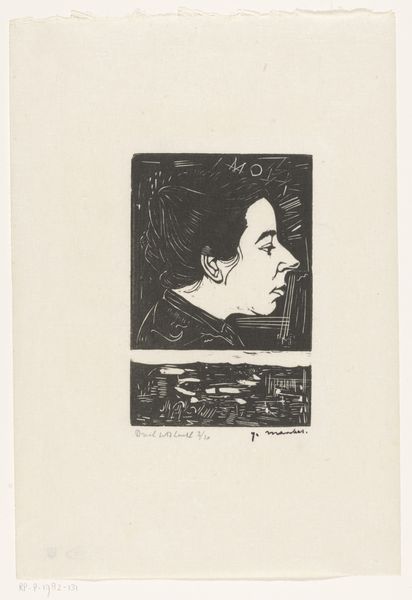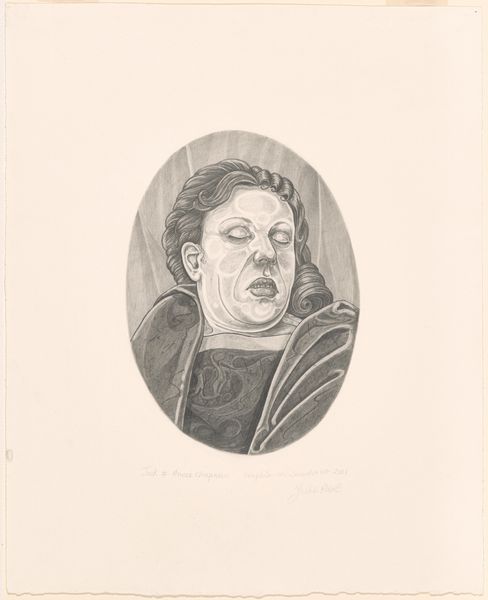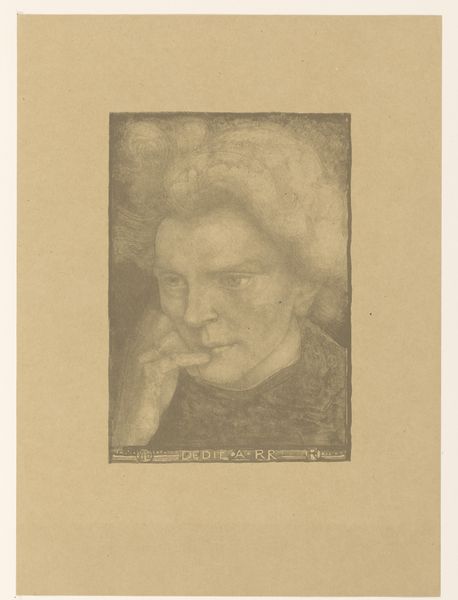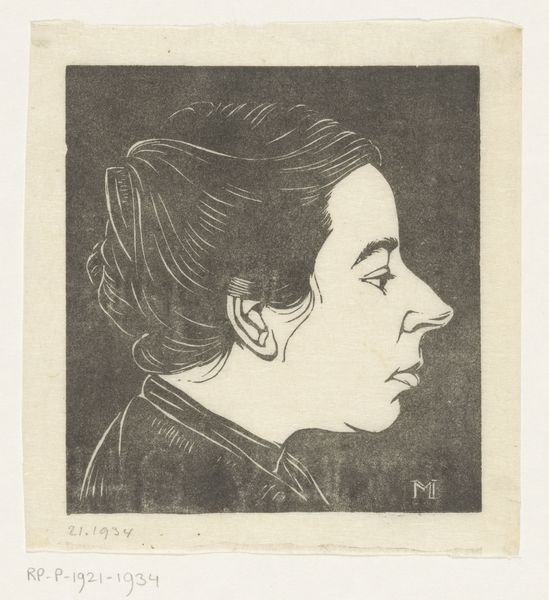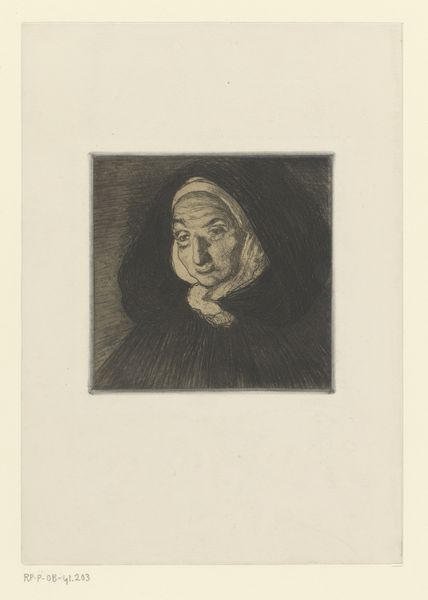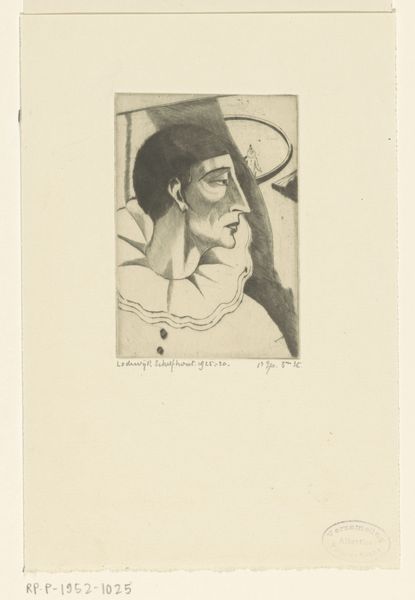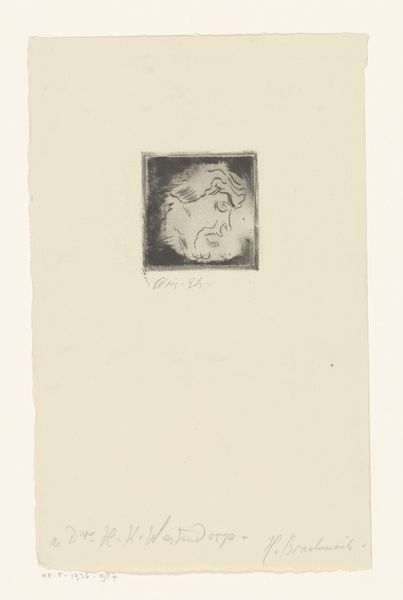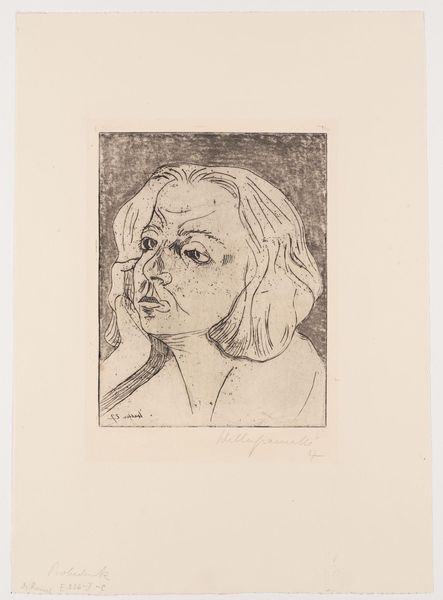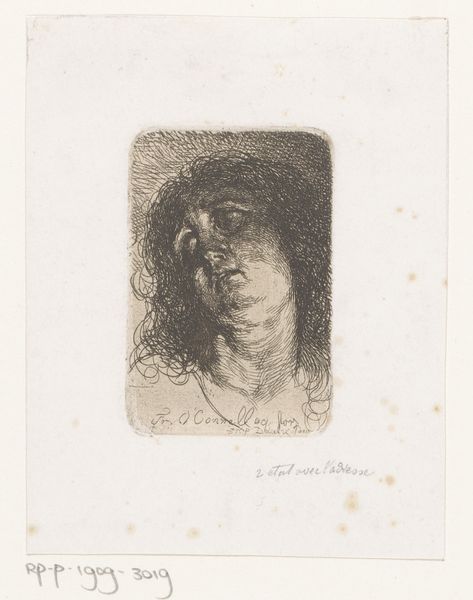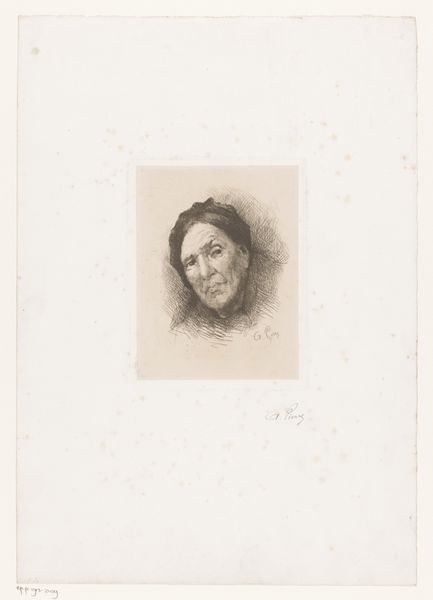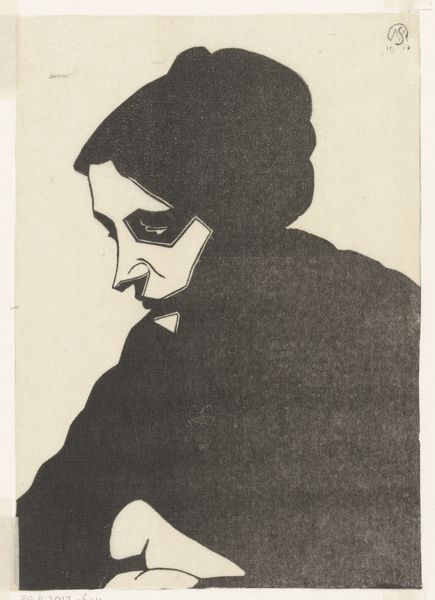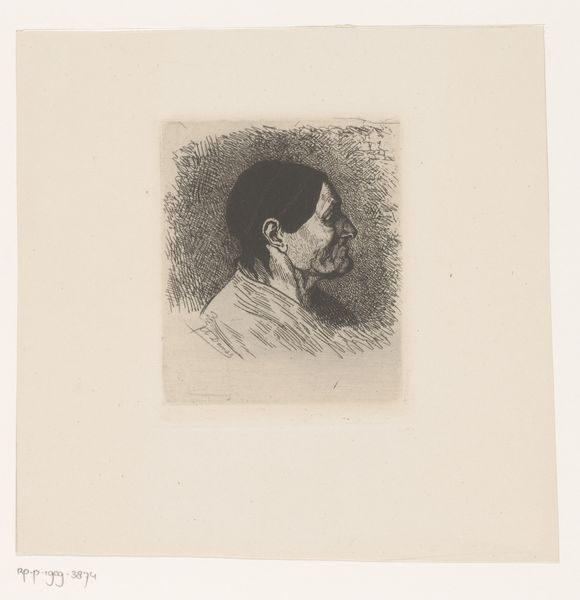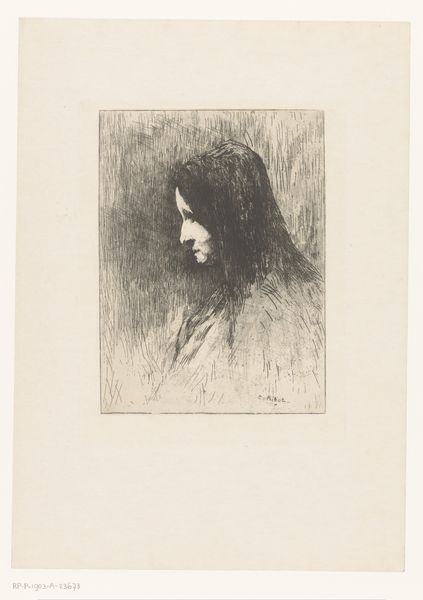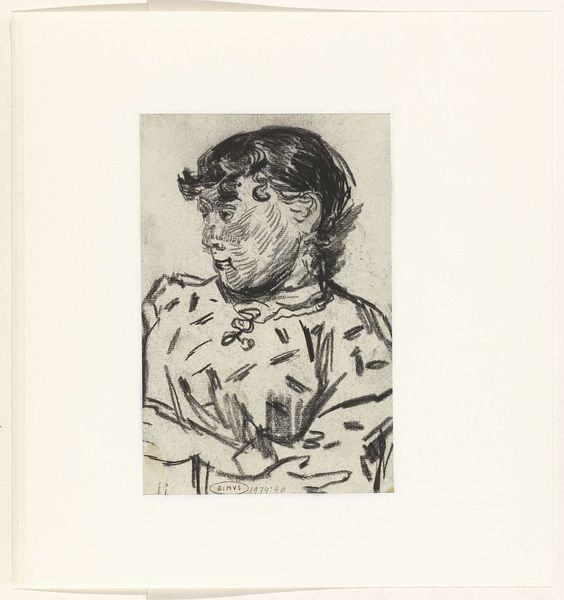
Dimensions: height 246 mm, width 209 mm
Copyright: Rijks Museum: Open Domain
Curator: Here we have Félix Vallotton's woodcut "Portrait of Robert Schumann" from 1895. Editor: Dark, intense… looks like Schumann’s caught in a thunderstorm of thought, a bit of a melancholy tempest brewing right there by his brow. Curator: Vallotton's print, created posthumously, taps into Schumann’s complex legacy. It appeared amidst a fin-de-siècle revival of interest in his work. His tragic personal history—battles with mental illness—was becoming increasingly intertwined with the reception of his music. Editor: The severe cropping adds to the claustrophobic feeling. Like his genius is pressing him. And those intense lines Vallotton carved… it's almost brutal. Did he *like* Schumann? It doesn’t seem like hero worship. More like a... clinical observation, maybe? Curator: Vallotton was interested in the psychology of the subject. It mirrors broader cultural fascination. Portraits were never just about likeness, but became diagnostic tools revealing social or psychological truths about the sitter. Editor: Funny how black and white it is—so decisive, not like reality. Life has blur and nuance, not crisp edges. That deep shadow just adds drama, no soft fading here. Gives the impression of a relentless force. I want to find a moment to say it really highlights a mental space he may have occupied at times, very dramatically. Curator: This kind of stark aesthetic became popular through posters and printed media during Vallotton’s period, aligning his style with a progressive printmaking movement and mass-culture interests. Editor: Seeing this portrait has me reaching for the sheet music—to check in with the notes! Curator: Indeed, it’s striking how one image might invite deeper reflection. Editor: Yeah. A compelling way of connecting feeling and… genius.
Comments
No comments
Be the first to comment and join the conversation on the ultimate creative platform.
